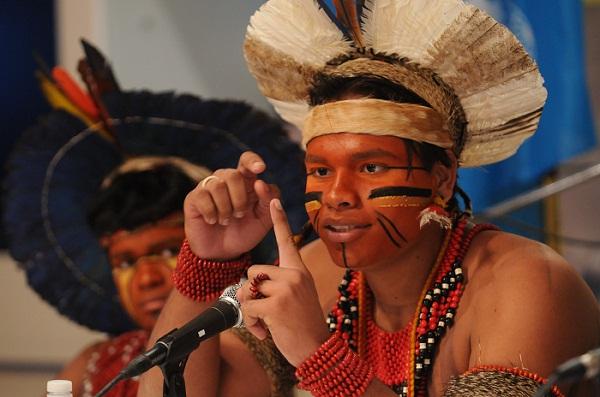- عربي
- 中文
- English
- Français
- Русский
- Español
Message from SRSG on Violence against Children on the occasion of the International Day of the World’s Indigenous Peoples “Indigenous Media, Empowering Indigenous Voices" - 9 August 2012

New York, 9 August 2012 - The past years have been marked by a strengthening of the rights of indigenous peoples, including the rights of indigenous children. Together with other international standards, the Convention on the Rights of the Child and its Optional Protocols remain a crucial reference in this regard. The new third Optional Protocol to the Convention on a Communications Procedure will allow children to bring complaints to the United Nations Committee on the Rights of the Child. With this new instrument children, just like adults, will have an access to international human rights bodies.
The Protocol has a special significance for indigenous children since it strengthens their ability to seek justice in case of violation of their rights, including when incidents of violence take place.
Despite these important developments, the gap between international human rights instruments and their implementation remains wide and challenging. Still too often, indigenous children live in extreme poverty, suffer from poor health and face inequalities in accessing and enjoying education. Moreover, indigenous children are oftennot covered by birth registration efforts. These conditions make them highly vulnerable to violence, abuse and exploitation. Exposure to violence, marginalization and social exclusion erodes their identity and sense of self-esteem and compromises their ability to seek advice and benefit from services of quality.
The United Nations Study on Violence against Children urged all States to promote non-violent values and awareness-raising, and to promote change in attitudes and behaviour that condone violence, perpetuate stereotypes and allow discrimination against children. I see a great potential in indigenous media in promoting the protection of indigenous children from violence; at home, in schools, places where children work, institutions and communities, as well as in our societies at large. Indeed, international instruments have little meaning if children, their families and people working with and for them are not aware of children’s rights and the available means to protect them. Indigenous media can help fill this information gap!
Let’s work together to create a sustainable environment for indigenous media and build a better world for indigenous children!

